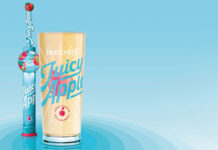New flavoured tonic waters are helping to boost gin sales
A GROWING number of flavoured tonic waters and other craft mixers is helping to bring gin to a wider audience than ever before.
As the number of gins on the market continues to grow, seemingly by the month, customers are now presented with a much greater choice in accompanying mixers.

And drinks firms say this has helped to attract many potential gin drinkers who were previously put off by the quinine flavour of tonic water.
Getting ahead of the curve, then, on the best new mixers for gin and the best way to serve these can give the canny operator an edge over competitors.
Challenging customers to try gin with other mixers can be a revelation.
“An increase in flavoured tonics has in turn led to more gin sales as they appeal to a wider demographic who may have been put off gin by the bitterness of the tonic,” said Lindsay Blair of Daffy’s Gin.
“It’s hard to beat the classic gin and tonic, however many gin lovers aren’t fans of the quinine flavour and so with the rise in premium mixers we are now seeing brands push alternative serves including gin and ginger, or gin with Fentimans Rose Lemonade.”
Bob Fowkes at Brockmans Gin agreed, observing that the rise of alternative mixers for gin has had “a huge impact” on gin sales.
“For some customers who think they dislike gin, it is actually the flavour of the tonic they dislike, so challenging customers to try gin with other mixers can be a revelation,” said Fowkes.
Other broader trends in the drinks industry are also said to be at play.
James Hayman of Hayman’s Gin believes that the increased inclination of drinkers to consume less alcohol but superior mixtures is in line with the creation of newer higher premium mixers and gins.
He said: “The recent interest in flavoured tonic waters and indeed premium classic tonic waters plays into the gin category and opens up opportunities for consumer exploration, which can only be a good thing.
“As with the gin category itself, consumers are increasingly looking for higher quality tonics with greater provenance – their whole expectations of the category are growing and maturing and we believe this plays to the strengths of brands like Hayman’s who have a strong provenance story to deliver.
“It is all part of the wider trend to drink less but drink better.”
This was backed up by Fentimans marketing director Andrew Jackson, who said customers expect a premium mixer to accompany a premium spirit.
“It is really important that to go alongside premium spirits, operators also offer premium mixers,” said Jackson.
“Customers don’t want to pair a lovely spirit with a mixer that doesn’t live up to the same standard, and operators need to address this.”
Discovering which mixers to pair with a gin for best results and increased sales can be a fraught process.
Some manufacturers are intent on helping licensees navigate the range of combinations.
Soft drink producer Franklin & Sons has launched a ‘G&T Ladder’ to help bar staff suitably match gins to mixers and serve the drink in the best possible way.
It’s important that operators understand how the flavour of spirits interact with mixers.
The guide begins with straightforward combinations and runs to more complex gin pairings.
For instance, the guide starts at pairing juniper-forward gins like London Dry to classic tonic waters before going on to recommend that flavoured gins can be paired to less traditional mixers such as rhubarb gin with ginger ale “to lift the tartness of the spirit”.
Jackson at Fentimans said that while “classic tonics remain the most popular mixers for a traditional gin and tonic there’s definitely a greater interest in unusual flavours for a different take” on a gin and tonic.
He also emphasised the significance of staff being knowledgeable on the combinations available, saying: “It’s important that operators understand how the flavour of their spirits interact with mixers so they can make an informed decision about their offering of mixers.”
The importance of staff awareness was also highlighted by Franklin & Sons as vital to delivering the perfect serve for each product.
The theatre of a serve plays a significant role in consumers’ on-trade experience.
A spokeswoman for the company said: “The theatre of a serve plays a significant role in consumers’ on-trade experience.
“Depending on the chosen combination, garnishes typically can both harmonise with a gin’s key flavours, or contrast and balance them.
“For example, some gins include no citrus botanicals during distillation, in anticipation of being served with an orange or lemon garnish.”
With the classic gin and tonic still reigning supreme it remains crucial for venues to get their conventional serve bang on, however.
Amy Burgess, trade communications manager at Coca Cola European Partners, shared Schweppes’ recommended serve for a G&T.
She said: “The best way to achieve the perfect G&T is to fill a 12oz glass to the top with cubed ice, followed by a measure of gin. Fill to the top with classic Schweppes Indian Tonic Water.
“Garnish with a freshly cut lemon slice or lime wedges squeezed into the glass, rubbed around the rim and dropped in.”
























